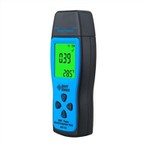Things to keep in mind when calibrating sound level meters
The sound level meter is the most basic noise measuring instrument. It is an electronic instrument, but it is different from objective mechanical electronics such as ammeters. When converting acoustic signals into electronic signals, the time characteristics of the human ear's response rate to sound waves can be simulated; the characteristics of different sensitivities and the intensity characteristics of changing characteristics at different tones. A sound level meter is a subjective electronic instrument.
Whether the sound level meter is used properly will directly affect the accuracy of the measurement results. Therefore, it is necessary to introduce the application of sound level meters.
1. Selection of the environment in which the sound level meter is used: Choose a representative testing location away from the road and the wall to reduce the additional impact of reflective surfaces on the road and wall.
2. The temperature standard stipulates that when there is no rain or snow, the sound level meter should keep the microphone pulse damper clean. If the wind speed is above level 3, a wind cover must be installed (to avoid the influence of wind noise). If the wind speed is above level 5, the measurement should be stopped. .
3. Turn on the sound level meter, remove the sound level meter, and put on the sensor.
4. Place the sound level meter for measurement, check the battery, and then calibrate the sound level meter.
5. List (generally common environmental sound pressure level reference) and adjust the measurement range.
6. Next, you can use fast (to measure the instantaneous value in an environment where the sound pressure level changes greatly), slow (to measure the average value in an environment where the sound pressure level does not change greatly), and single pulse (to measure a single pulse sound source). ), filters (measuring the sound pressure level of a specific frequency range) and various functions for measurement.
7. By recording data, you can also connect to a printer or other computer server for automatic collection. Comb out the instruments and place them in specific areas.
What matters must be paid attention to when calibrating the instrument:
1) Before application, read the instructions for use and master the operation methods and common problems of the instrument.
2) The instrument should be prevented from being placed in areas with high temperatures, humidity, waste water, dust, gases with high sulfuric acid, alkali content or organic chemical gases.
3) When installing the rechargeable battery or external power supply, pay attention to the optical rotation and avoid reverse connection. There is no need to use rechargeable batteries for a long time to avoid leakage and damage to the instrument.
4) Do not disassemble or assemble the microphone, avoid throwing it, and store it securely when not in use.
5) Do not disassemble or assemble the instrument without permission. If the instrument is abnormal, it should be sent to a maintenance company or factory for repair.
6) During use, if an undervoltage alarm occurs on the LCD screen, the battery should be replaced immediately.
7) Before measuring the sound level meter, you can start heating for 2 minutes and heat for 5 to 10 minutes on wet and cold days.






